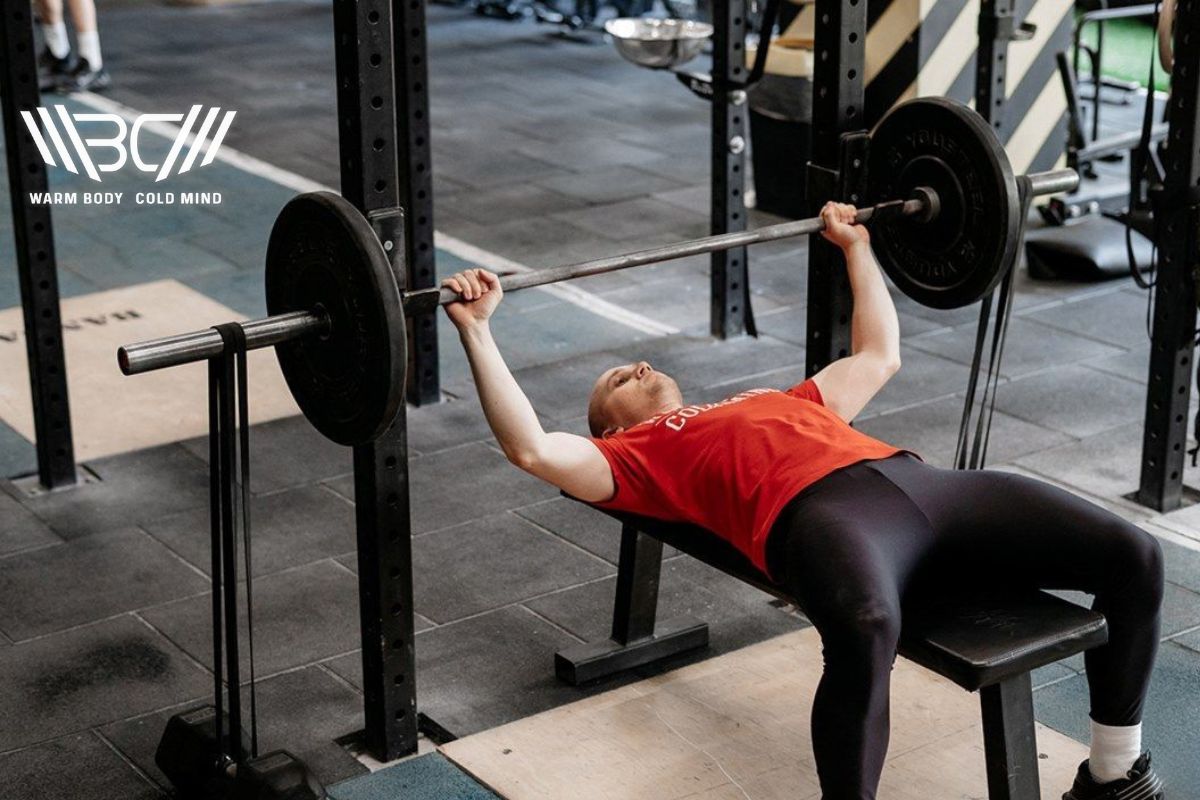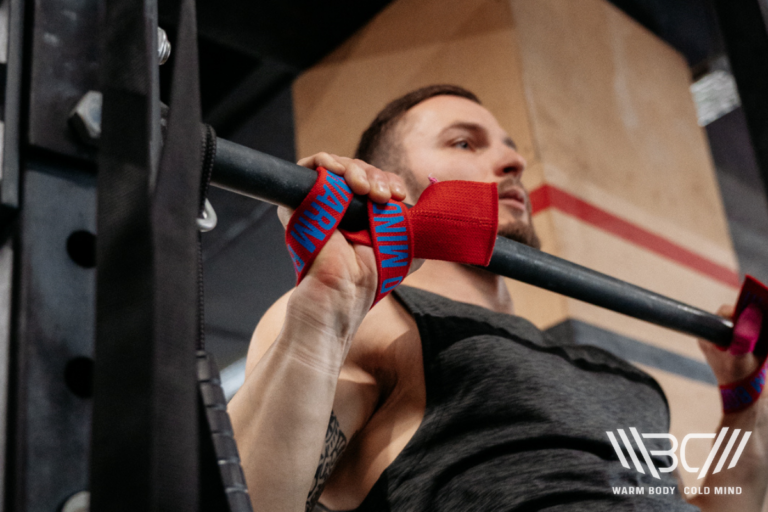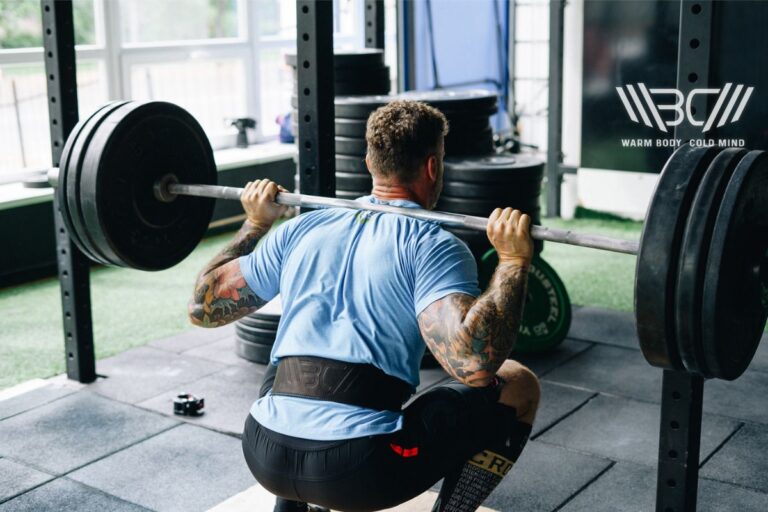Banded Bench Press: The Key to Next-Level Strength Training
If your goal is to elevate your chest workouts or break through bench press plateaus, the banded bench press can be transformative.
Yet, questions arise about its benefits and suitability for different fitness levels. In this article, we’ll discuss everything from the benefits to proper techniques and much more.
The banded bench press elevates traditional strength training by incorporating resistance bands, enhancing muscle engagement and overall upper-body strength. It’s ideal for those seeking to intensify their workouts and overcome plateaus in regular bench press routines.
What Is Banded Bench Press and How Does It Work?
The banded bench press combines traditional bench pressing with added resistance from elastic bands. This innovative approach intensifies muscle engagement throughout the exercise, leading to enhanced strength and muscle growth.
But what are the specific banded bench press benefits, and how does setting up bands for bench press differ from the classic approach?
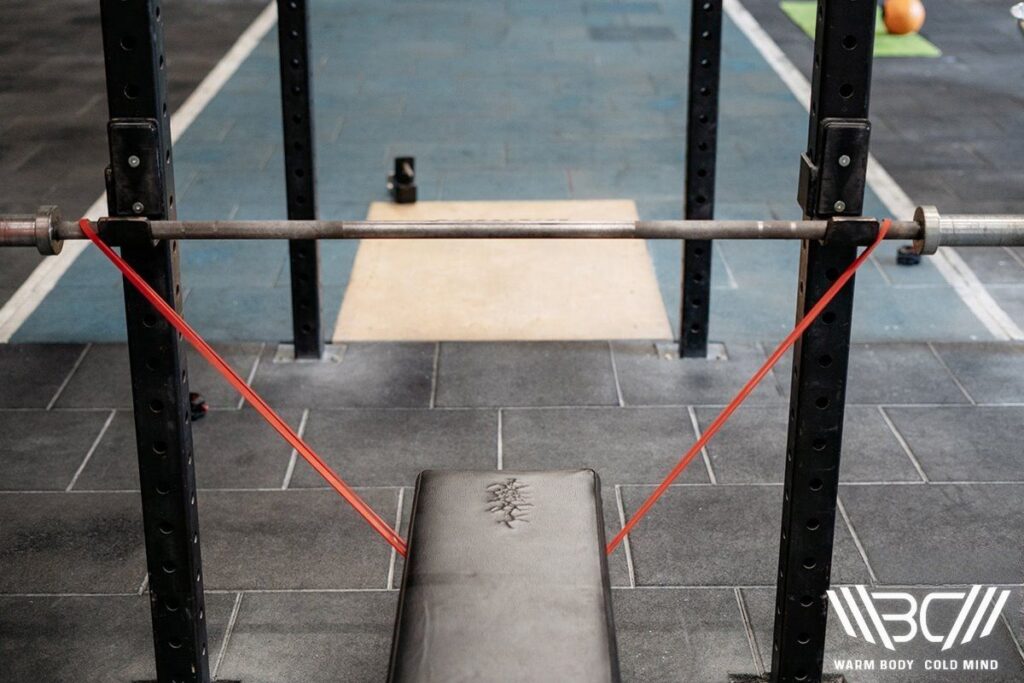
3 Benefits of Banded Bench Press
The banded bench press offers numerous benefits that make it a valuable addition to any strength training routine. Here are some of the benefits of banded bench press:
✅ Enhanced Muscle Activation
One of the primary advantages of the banded bench press is the increased muscle activation it provides. When you perform a bench press with resistance bands, the elastic tension of the bands adds a unique challenge.
This tension varies throughout the movement, requiring more effort and thus engaging more muscle fibers, especially in the upper chest and triceps.
✅ Versatility and Adaptability
The setup for the banded bench press is adaptable to various fitness levels. Whether you’re a beginner or an experienced lifter, you can adjust the resistance by changing the bands. This versatility makes the banded bench press a suitable exercise for a wide range of individuals looking to improve their strength training regimen.
✅ Safe and Joint-Friendly
Finally, one of the notable banded bench press benefits is its joint-friendliness. The bands provide a smoother resistance than free weights alone, reducing the strain on joints. This makes it an excellent option for those with joint concerns or for lifters looking to reduce the risk of injury.
Who Will Benefit from Banded Bench Press the Most?
The banded bench press is a versatile exercise that caters to a wide audience. From beginners to advanced lifters, athletes to those with joint concerns, its unique benefits make it a valuable addition to any fitness program.
1. Beginner Lifters
Newcomers to strength training can greatly benefit from the bench press with bands. The elastic resistance helps in maintaining good form and provides a safer, more controlled environment. It’s an excellent way to build foundational strength while minimizing the risk of injury common in heavy lifting.
2. Experienced Weightlifters
For those already familiar with the barbell bench press, adding bands introduces a new challenge. The progressive resistance of the elastic band bench press can help overcome plateaus and continuously stimulate muscle growth, making it ideal for seasoned lifters seeking to advance their strength and muscular development.
3. Athletes Focused on Explosive Power
Athletes who require explosive power and speed, such as football players or track and field competitors, will find the bands for bench press particularly advantageous. The variable resistance improves explosive strength, which is crucial for enhancing performance in various sports.
4. Individuals with Joint Concerns
The banded bench press setup offers a more joint-friendly alternative to traditional heavy lifting. By reducing the load at the bottom of the press, where the joints are most vulnerable, and increasing it at the top, it allows for effective muscle engagement with less joint stress.
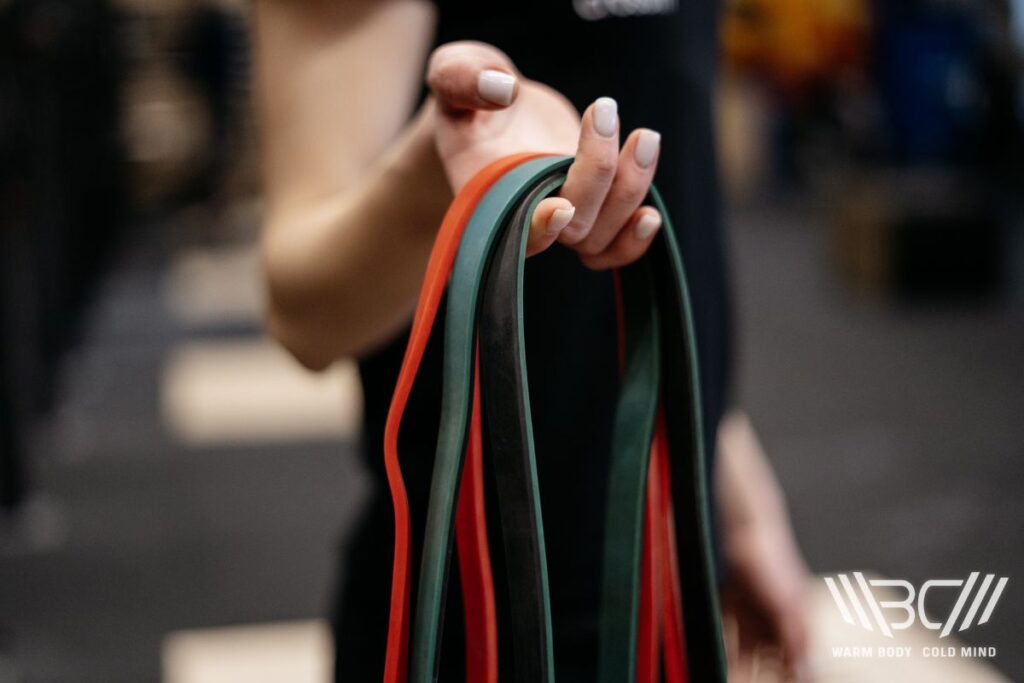
5. Rehabilitation and Recovery
Those in rehabilitation or recovering from injury can use the banded bench press as a tool to regain strength. The adjustable resistance and reduced strain on joints make it a suitable exercise for gently reintroducing strength training post-injury.
6. Overall Fitness Enthusiasts
Finally, anyone looking to diversify their workout routine will find the banded bench press beneficial. It not only enhances strength and muscle development but also adds variety to regular training, keeping workouts engaging and challenging.
3 Disadvantages of Bench Press with Bands
While the bench press with resistance bands offers numerous benefits, like any exercise, it also comes with certain disadvantages. Let’s explore some of them.
❌ Potential for Uneven Resistance Distribution
One of the challenges in performing a barbell bench press with bands is ensuring an even distribution of resistance. If the bands are not properly aligned or of equal tension, it can lead to an imbalanced workout, potentially causing muscle imbalances or injury.
❌ Complexity of Setup
Setting up for a banded bench press can be more complex compared to a traditional bench press. Properly attaching bands to the barbell and ensuring they are secure requires additional time and effort. For those unfamiliar with how to set up a banded bench press, this can be a significant deterrent.
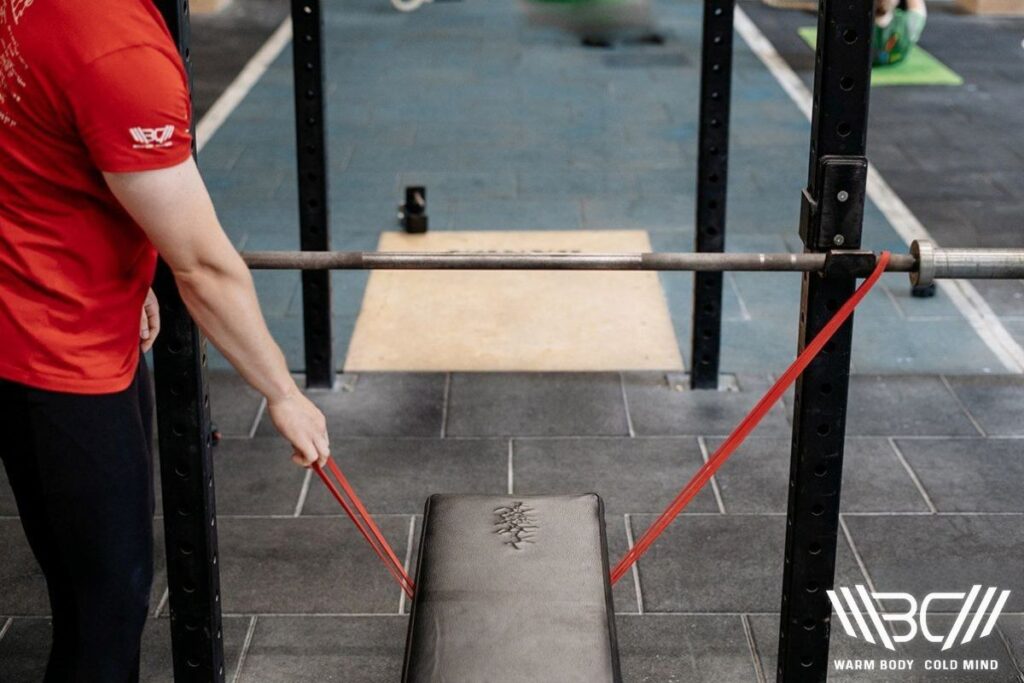
❌ Risk of Band Breakage
Although rare, there is always a risk of bands breaking during the exercise, which can lead to sudden loss of resistance and potentially cause injury. This risk necessitates extra caution and regular inspection of the bands for any signs of wear and tear.
Who Might Not Want to Do Banded Bench Press?
While the banded bench press is a versatile and beneficial exercise, it might not be suitable for everyone. Certain individuals may find this variation of the bench press with bands less appealing or appropriate due to specific reasons.
1. Beginners Unfamiliar with Basic Techniques
Beginners who are still mastering the fundamentals of the barbell bench press may find the addition of bands overwhelming. The complexity of the banded bench press setup and the coordination required to manage the elastic resistance can be challenging for those new to weightlifting.
2. Lifters with Limited Access to Equipment
Individuals who train in facilities that don’t provide specialized equipment, such as resistance bands for bench press, might find it impractical to incorporate this exercise into their routine. The need for specific types of bands that can safely attach to a barbell can be a significant barrier.
How to Setup Banded Bench Press?
Setting up a banded bench press correctly is crucial for a safe and effective workout. This process involves anchoring bands correctly and choosing the right weight. Let’s break down the steps.
1. Choose the Right Equipment
Before you start, it’s essential to select the appropriate bands for bench press. The bands should be robust, made of high-quality elastic material, and designed specifically for weightlifting.
2. Secure the Bands to the Barbell
After selecting your bands, loop them securely around the barbell. Ensure that the bands are centered and evenly placed on each side of the barbell to maintain balance during the exercise. The bands should be attached just inside the plates to prevent slipping or uneven distribution of tension.
3. Anchor the Bands to the Bench
Once the bands are attached to the barbell, anchor them to the bench press setup. This can be done by looping the other end of the bands around the base of the bench or, if available, using designated anchor points on the bench itself.
Make sure the bands are taut but not overly stretched to provide resistance throughout the entire range of motion.
4. Selecting the Weight
When it comes to choosing the weight for your barbell bench press with bands, start conservatively. The bands add extra resistance, especially at the top of the lift, so you may need to reduce the weight you would typically lift without bands. As you get accustomed to the resistance pattern, you can gradually increase the weight.

5. Test and Adjust
Before starting your workout, do a few test presses to ensure everything is set up correctly. Pay attention to the tension of the bands throughout the movement and adjust if necessary. The goal is to have a smooth, challenging, but manageable resistance during the lift.
Equipment to Use
For the banded bench press, selecting the right type of resistance band is crucial. Ideal bands are durable, made specifically for strength training, and offer the appropriate level of resistance. They should be flat loop bands, thick enough to withstand the tension of bench pressing without snapping.
Choose a band that complements your strength level – lighter bands for beginners or heavier bands for advanced lifters. The length should be sufficient to anchor securely to the bench and the barbell, ensuring consistent resistance throughout the exercise.
Rogue Monster Bands
Rogue Monster Bands, available individually or in sets, are your ultimate resistance training tool. Each of the eight color-coded bands offers distinct resistance, from 9 to 225 lbs, tailored for everything from pull-up assistance to intense squats. Made from durable natural latex rubber, these 41″ bands are perfect for any training level.

Whether you’re doing rehabilitation or advanced weight training, there’s a Monster Band for you. Portable and versatile, they fit easily into your gym bag, ready for indoor or outdoor workouts. You can now enhance your training with Rogue Monster Bands. They are a durable and multi-purpose addition to your fitness regime.
3 Main Mistakes in Performing Bench Press with Bands
Performing the bench press with bands can significantly enhance your workout, but it’s crucial to avoid common mistakes to ensure safety and effectiveness. Let’s explore some typical mistakes and their solutions.
1. Incorrect Band Placement
• Mistake
A common error is improperly placing the bands, either unevenly on the barbell or attaching them incorrectly to the bench. This can lead to an imbalanced workout and increase the risk of injury.
• Solution
Always ensure that the bands are symmetrically placed on both sides of the barbell. Double-check that the bands are securely anchored to the bench or the floor, providing even resistance during the exercise.
2. Choosing the Wrong Band Strength
• Mistake
Using bands that are too strong or too weak for your current strength level can either overload your muscles or fail to provide enough challenge, hindering your progress.
• Solution
Start with lighter resistance bands and gradually progress to heavier ones as your strength increases. It’s important to select a band that offers a challenging yet manageable resistance.

3. Neglecting Band Maintenance
• Mistake
Failing to regularly inspect the bands for wear and tear can result in unexpected snapping, potentially causing injury.
• Solution
Make sure to frequently check your resistance bands for any indications of wear, like splitting or unraveling. Replace them promptly if any wear is observed.
Subscribe!
The latest reviews of must-have home gym training equipment, apparel, and supplements that will enhance your performance and bring you new results.
An Example of a Bench Press Workout with Bands
Incorporating bands into your bench press routine can add a new dimension to your workout. Here’s an example of how you can structure a banded bench press workout.
1. Banded Bench Press Routine
Frequency: You can integrate this workout into your routine 2-3 times a week. Ensure you have at least one rest day between sessions to allow for muscle recovery.
Repetitions: Start with 3 sets of 8-10 repetitions. If you’re a beginner, focus on getting the form right with lighter resistance bands. For more experienced lifters, increase the resistance to add challenge.
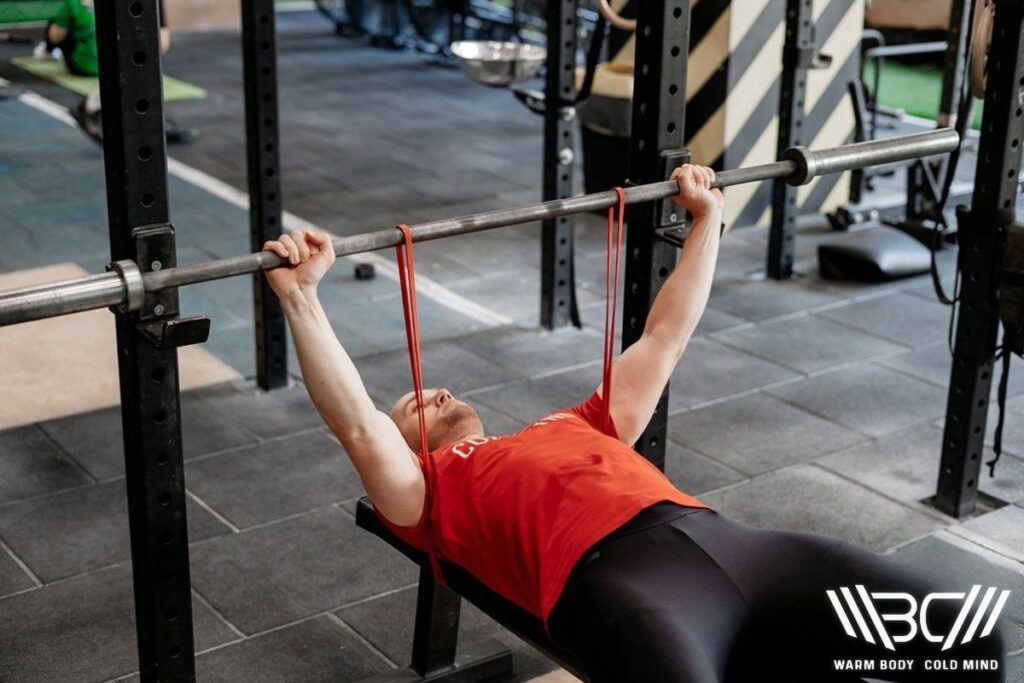
2. Complementary Exercises
- Banded Push-Ups: These will further engage your chest and triceps, complementing the bench press.
- Banded Rows: To balance your workout, include exercises for your back, like banded rows, promoting overall upper body strength.
- Shoulder Press with Bands: This will help in strengthening your shoulders, which are crucial for a stable bench press.
Suitability for Beginners: The banded bench press is suitable for beginners, provided they start with lighter bands and focus on mastering the form.
3. Workout Structure
- Warm-Up: Begin with a 5-10 minute warm-up focusing on the upper body. Include arm circles, shoulder stretches, and light cardio to get your muscles ready.
- Banded Bench Press: Perform your sets with controlled movements, ensuring proper form.
- Complementary Exercises: Follow up with banded push-ups, rows, and shoulder presses.
- Cool Down: End your session with a cool-down involving stretching to help with muscle recovery.
FAQ
Is Adding Bands to Bench Press Good?
Yes, adding bands to a bench press is beneficial. It increases muscle activation and provides progressive resistance, which can enhance strength gains and improve overall workout intensity.
How Much Weight Do Bands Add to the Bench Press?
The weight added by bands to a bench press varies. It depends on the band’s thickness and elasticity. Typically, bands can add anywhere from 10 to over 100 pounds of resistance at the top of the lift, where the bands are most stretched.
Can Resistance Bands Replace Barbell Bench Press?
Resistance bands can’t completely replace the barbell bench press, especially for heavy lifting and maximal strength development. However, they are a great alternative for those with limited equipment, for rehabilitation, or for adding variety to a workout routine.
Conclusion
The banded bench press revolutionizes strength training, boosting muscle activation and offering progressive resistance in a safe manner. Perfect for all fitness levels, it helps break plateaus, aids rehabilitation and adds variety to routines.
Have questions or experiences to share? Join the conversation in the comments below and elevate your fitness journey!
Also read:
References:
- Barnett, Chris; Kippers, Vaughan; Turner, Peter, “Effects of Variations of the Bench Press Exercise on the EMG Activity of Five Shoulder Muscles,” Journal of Strength and Conditioning Research 9, no. 4 (1995): 222-227.
- Del P Wong, Kuwang-Lung Ngo, Michael Tse, Andrew Smith, “Using Bench Press Load to Predict Upper Body Exercise Loads in Physically Active Individuals,” Journal of Sports Science & Medicine 12 no. 1 (2013): 38.
- Derek Haaland, Sabljic Thomas, Baribeau Danielle, Ilya Mukovozov, and Lawrence Hart, “Is Regular Exercise a Friend or Foe of the Aging Immune System? A Systematic Review,” Clinical Journal of Sport Medicine 18, no. 6 (2008): 539-548.
- Erik Hanson, Sindhu Srivatsan, Siddhartha Agrawal, Kalapurakkal Menon, Matthew Delmonico, Min Wang, and Ben F. Hurley, “Effects of Strength Training on Physical Function: Influence of Power, Strength, and Body Composition,” Journal of Strength and Conditioning Research/National Strength & Conditioning Association 23, no. 9 (2009): 2627.
- Johnny Padulo, Guillaume Laffaye, Anis Chaouachi, Karim Chamari, “Bench Press Exercise: The Key Points,” The Journal of Sports Medicine and Physical Fitness 55, no. 6: 604-8.
Author: Sergii Putsov
PhD in Sport Science, Olympic weightlifting, Strength & Conditioning coach and fitness expert
Sergii Putsov is a professional weightlifter with over 20 years of experience and multiple national medals. He was a member of the National weightlifting team, competing in the 94 kg weight class. Sergii holds a master’s degree in Olympic & Professional Sport Training and a Ph.D. in Sport Science. After his athletic career, Sergii transitioned into coaching and is now responsible for designing training programs, writing blog articles, providing live commentary for international weightlifting competitions, and hosting sport and fitness seminars worldwide.

